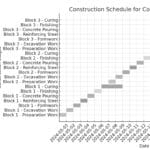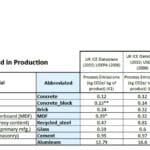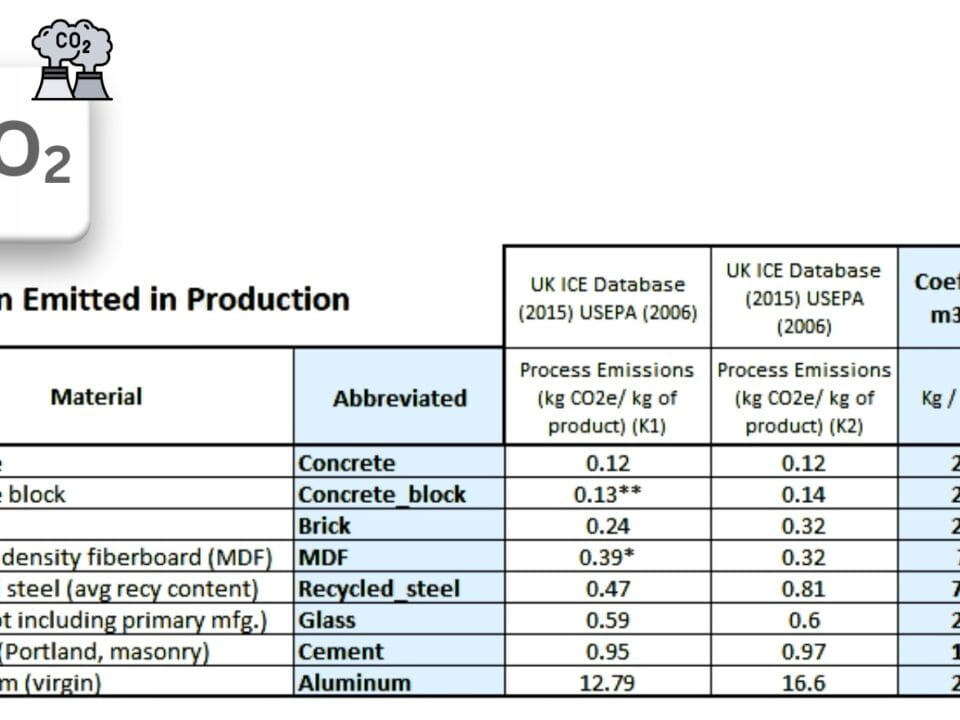6D, 7D and 8D are extended levels of information modeling, each of which contributes additional layers of attributes to the comprehensive project information model, the basis of which are the attributes of the 3D -model with their number and scope. Each additional layer contributes specific parameters that are required for further grouping or further identification in other systems, such as for example real estate management systems (PMS), computer-aided facilities management (CAFM), construction project management (CPM) and safety management systems (SMS).
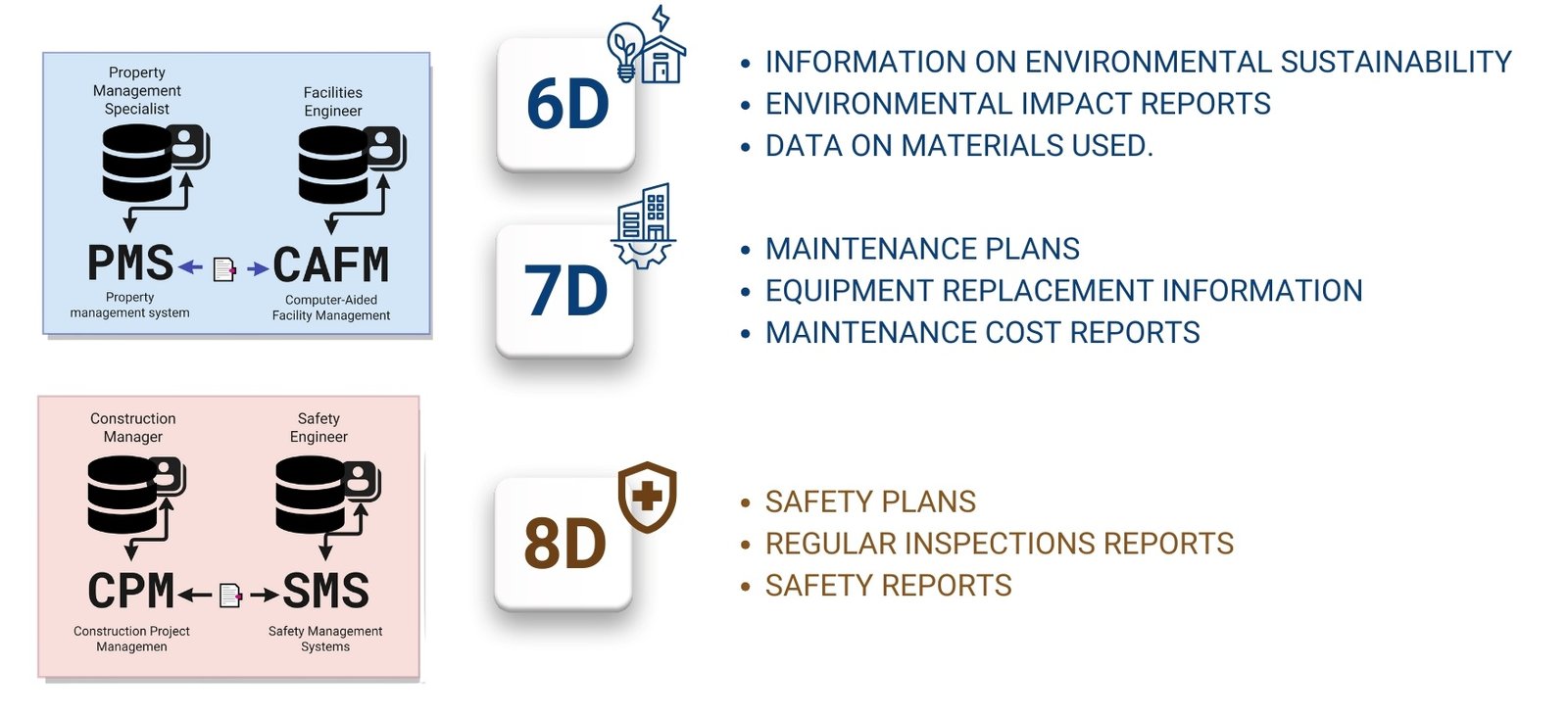
- In 6D, in addition to the project database (or dataframe (Fig. 4.1-13)) with geometric and volumetric attributes of elements, information (attribute-columns) on environmental sustainability is added. This includes information related to energy efficiency, carbon footprint, recyclability of materials, and use of environmentally friendly technologies. This data allows the project’s environmental impact to be assessed, project decisions to be optimized and Sustainable Development Goals (ESG) to be achieved.
- 7D attributes supplement the attributes needed to manage building maintenance. These are data on maintenance schedules, component life cycles, technical documentation and repair history. This set of information ensures that the model can be integrated with maintenance systems (CAFM, AMS), allows for efficient scheduling of maintenance, replacement of equipment and provides support throughout the entire lifecycle of the facility.
- 8D additional attribute layer, – includes information related to safety – both at the construction stage and during subsequent operation. The model includes measures to ensure the safety of personnel, emergency instructions, requirements for evacuation systems and fire protection. The integration of this data into the digital model helps to take risks into account in advance and develop architectural, engineering and organizational solutions that take into account health and safety requirements.
In structured tabular form, layers 4D to 8D represent additional attributes in the form of columns with populated values (Fig. 5.3-5) added to the already populated 3D -model attributes such as name, category, type and volumetric characteristics. The values in attribute layers 6D, 7D and 8D contain additional textual and numerical data such as recycling percentage, carbon footprint, warranty period, replacement cycle, installation date, safety protocols, etc.
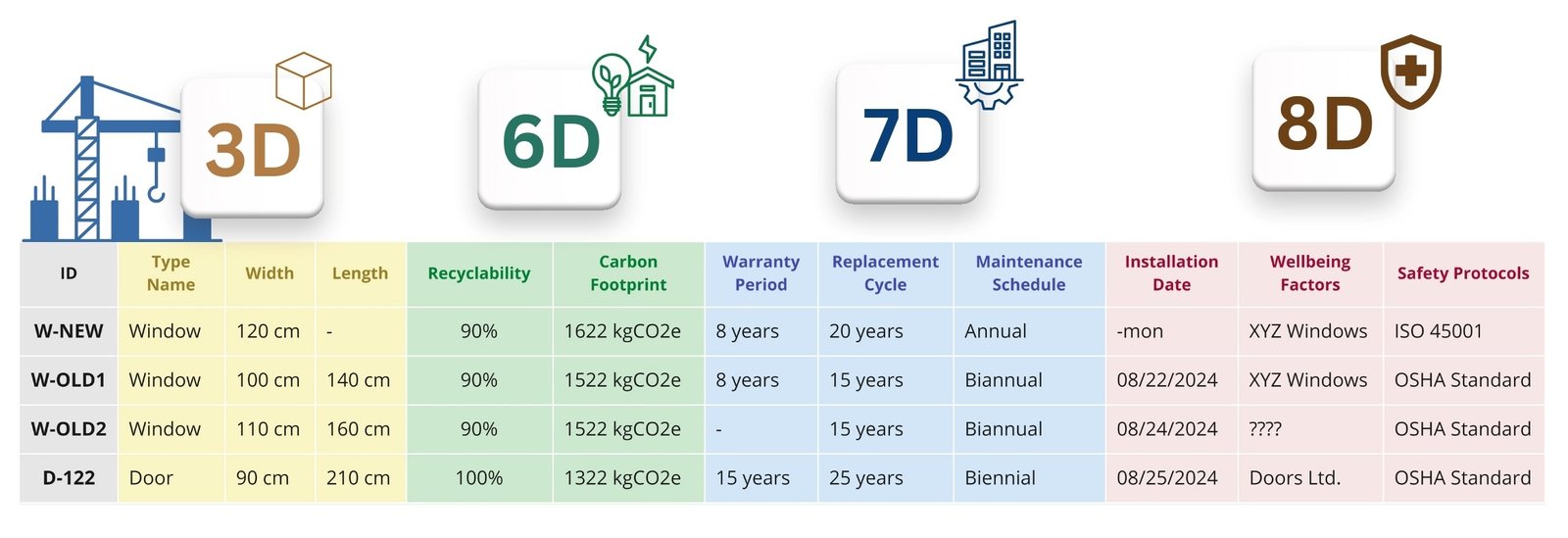
For our new window (Fig. 4.4-1), the element with the identifier W-NEW (Fig. 5.3-5) can have the following 3D -8D attributes:
3D -attributes – geometric information obtained from CAD systems:
- “Type name” – element “Window”
- “Width” – 120 cm
- Additionally, you can add the “Bounding Box ” points of an element or its “geometry BREP / MESH ” as a separate attribute
Attributes of 6D – environmental sustainability:
Recyclability rate of 90%
“Carbon Footprint – 1,622 kg CO₂
Attributes 7D – object management data:
- “Warranty period” – 8 years
- “Replacement Cycle” is 20 years old
- “Maintenance” – required annually
Attributes of 8D – ensuring the safe use and operation of buildings:
- Installed” window – by “XYZ Windows” company
- “Safety Standard” – complies with ISO 45001
All parameters recorded in a database or dataset (Fig. 5.3-5) are needed by specialists in different departments for grouping, searching or calculations. This multidimensional attribute-based description of project objects provides a complete picture of their life cycle, operational requirements, and many other aspects necessary for project design, construction, and operation.

